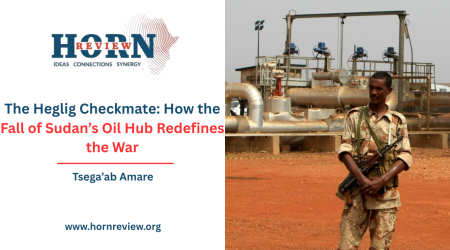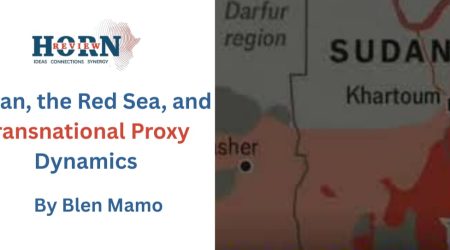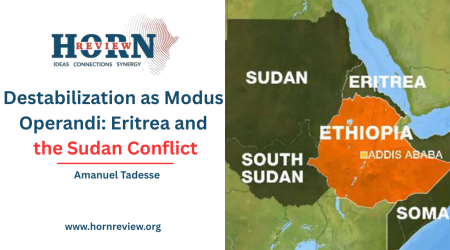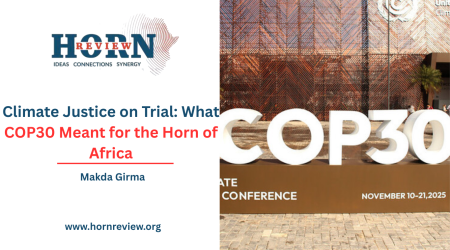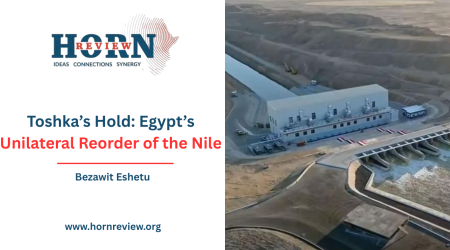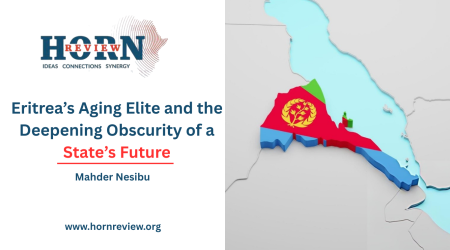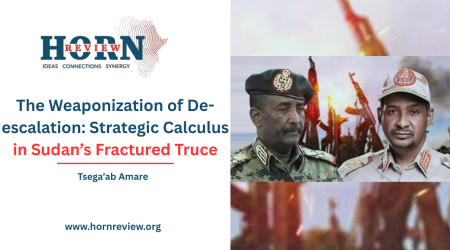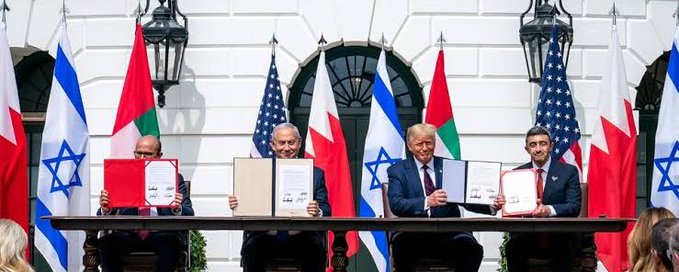
1
Apr
Shifting Sands, Rising Tides: The Abraham Accords and the Geopolitical Storm over the Red Sea
The Middle East is witnessing a profound transformation, as the Abraham Accords continue to reshape the region’s geopolitical landscape. These agreements, signed in 2020, marked a historic shift by normalizing relations between Israel and several Arab states, including the UAE, Bahrain, Morocco, and Sudan. The Accords have created a new axis of cooperation, driven by shared concerns over Iran’s influence and a desire for economic diversification. As the U.S.-Saudi alignment gains momentum under the Trump administration, the implications of these developments extend far beyond the Gulf, influencing the Red Sea and the Horn of Africa.
At the heart of this evolving alliance is Israel, whose regional security objectives have long been aligned with Washington and Riyadh in countering Iran’s influence. The intensifying collaboration between these actors is more than a simple recalibration, it marks a potential realignment of the Middle East’s balance of power. Which in turn, has ripple effects stretching from the Gulf to the Horn of Africa. The Abraham Accords have been instrumental in this process, aiming to boost new alliances and enhancing security cooperation between Israel and Arab Gulf states.
The recent U.S.-Saudi diplomatic maneuvering signals a sharp departure from the cautious engagement under Biden. Trump’s decision to host Ukraine-Russia peace talks in Riyadh highlights Saudi Arabia’s elevated global stature. It reinforces its ambition to transition from a regional power to a global diplomatic force. Its plan to invest in the U.S. economy is another milestone in their relation.
This shift coincides with Washington’s efforts to reshape the Middle Eastern security architecture in ways that could enhance Israeli-Saudi cooperation. Trump’s return to power all but removes the ideological barriers that stalled Saudi participation in the Abraham Accords under Biden. Riyadh, emboldened by its economic and military leverage, is moving closer to formal ties with Israel, a prospect that would redefine the regional order.
For Saudi Arabia, deepening ties with Israel translates to advanced military technology, enhanced intelligence-sharing, and broader U.S. security guarantees. For Israel, a normalized relationship with Saudi Arabia represents the final piece in a strategic puzzle designed to encircle and isolate Iran. The integration of Saudi Arabia into the Israeli security network would tighten the containment of Tehran. It reinforces the growing anti-Iran axis that includes the UAE, Bahrain, and Egypt. Their broader goal is the erosion of Iranian influence in Syria, Lebanon, Iraq, and Yemen, thereby dismantling the so-called “Shia Crescent”.
At its core, the Abraham Accords reflect a pragmatic recalibration of Middle Eastern geopolitics. Yet, this burgeoning alignment faces its share of challenges. The Palestinian question remains a contentious issue. Nevertheless, Trump’s transactional approach to diplomacy suggests that economic incentives and military assurances could override traditional Arab opposition to normalization. However, regional players such as Algeria, Iraq, and Iran-backed factions remain vehemently opposed to such developments. They warn that further Arab-Israeli normalization risks igniting new hostilities.
The primary point of contention revolves around the Arab world’s strong advocacy for Palestinian statehood, contrasted by Israel’s ongoing military operations. Iran, feeling increasingly encircled, could respond asymmetrically, leveraging its proxy network to counter its adversaries. Hezbollah’s growing assertiveness in Lebanon and recent flare-ups in the Gaza Strip are early indicators of the heightened tensions accompanying this strategic shift.
Beyond the Gulf, the potential U.S.-Saudi-Israeli realignment is casting long shadows over the Red Sea and the Horn of Africa. The Red Sea corridor, a vital artery for global trade and energy security, is now a strategic place where Saudi Arabia seeks to expand its influence. Iran’s ability to threaten shipping lanes via its Houthi proxies in Yemen has galvanized Riyadh to assert control over this maritime chokepoint. The U.S., wary of China’s growing footprint in Djibouti and Iran’s efforts to challenge maritime stability, is likely to deepen naval coordination with Saudi Arabia and Israel.
The stakes in the Horn of Africa extend beyond port access. The growing Gulf presence in the region has already shifted the security dynamics, with countries like the UAE expanding military and economic footprints in Somaliland and Eritrea. Israel’s expanding influence now reaches beyond the Gulf, shaping new alliances in the Horn of Africa. Its growing ties with Ethiopia, including backing Addis Ababa’s push for Red Sea access, signal a strategic shift. By exploring a potential naval base in Somaliland, Israel aims to encircle Iran while countering Turkey and Qatar’s strongholds in Somalia and Sudan. The Horn of Africa is no longer a passive recipient of Middle Eastern rivalries; it is now an active front where global and regional powers extend their influence.
The Abraham Accords have not been without controversy, particularly regarding the Palestinian issue. The normalization of relations between Israel and Arab states has been criticized for undermining the Arab consensus on the Palestinian cause. Which traditionally conditioned normalization on resolving the Israeli-Palestinian conflict.
If the U.S.-Saudi-Israel alliance gains momentum, the potential consequences of these shifts are profound.
Iran may intensify proxy wars increasing Houthi attacks in the Red Sea and heightened proxy conflicts in Iraq and Syria. In addition, Iran would accelerate its nuclear ambitions, as recently demonstrated, claiming that talks with the U.S. are impossible unless Washington changes its maximum pressure policy. Which in turn, speed up the deep ties with Russia and China to counterbalance this bloc.
In the Horn of Africa, Somaliland may leverage its geopolitical position, while increased U.S.-Israeli military presence in the Red Sea could challenge Iran and Houthi influence. Meanwhile, the Horn nations must navigate this volatile landscape, balancing economic opportunities with the risks of entanglement in Middle Eastern power struggles.
As Trump’s second term presses to expand the Accords, the potential inclusion of Saudi Arabia looms as a game-changer. If so, Riyadh’s entry would formalize a prospect of a tripartite U.S.-Saudi-Israeli alliance, further isolating Iran and altering the region’s balance of power. The alignment’s future rests on fragile factors. U.S. military aid, differing views on the Israel-Hamas conflict, and Israel’s Gaza policies pose challenges. These issues could destabilize the partnership.
Ultimately, the Abraham Accords are central to the evolving geopolitical landscape of the Middle East, forging new alliances and security cooperation. If the U.S.-Saudi-Israeli alignment gains momentum, the implications extend far beyond the Gulf, influencing the Red Sea and the Horn of Africa. The future of these accords will depend on how well they manage regional tensions and unresolved conflicts, particularly in relation to Palestine. The Middle East is on the cusp of a transformation that will reverberate for years to come, with the potential to either stabilize or further fracture an already volatile region.
Yonas Yizezew, Researcher,Horn Review

